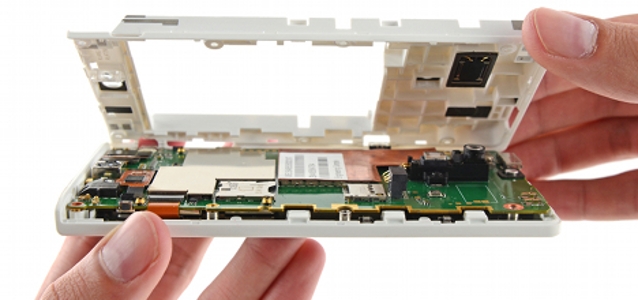
© iFixit
Teardowns |
Project Tango Teardown
Hey, great news! We didn't have to steal a Project Tango unit from a developer, or have someone "accidentally leave it" in a bar.
The folks at Google's Advanced Technology and Projects (ATAP) group were super-nice and provided us with a non-functional unit, which is otherwise identical to the 200+ developer Tangos now in the wild.
And boy oh boy are we excited! Tango's sole purpose in life is bringing an exciting technology (thus-far limited to game consoles and Mars rovers) to a mobile platform. As such, Google doesn't waste time with flashy looks or a slim body. It just packs its tech into a box in the simplest way possible. We got the chance to sneak a peek inside the Tango and figure out just what makes it tick.
Teardown highlights: Tango specs:
- Snapdragon 800 quad core (up to 2.3 GHz per core) CPU with 2 GB LPDDR3 RAM
- 64 GB internal storage, expandable by microSD
- 5" LCD screen
- 9-axis accelerometer/gyroscope/compass
- And of course, the depth-sensing array: an infrared projector, 4 MP rear-facing RGB/IR camera and 180º field of view fisheye rear-facing camera
What makes the Tango dance?
- Qualcomm 8974 (Snapdragon 800) processor
- Elpida FA164A1PB 2 GB LPDDR3 RAM
- SanDisk SDIN7DP4-64G 64 GB iNAND flash memory
- Two Movidius Myriad 1 computer vision co-processors
- Two AMIC A25L016 16 Mbit low voltage serial flash memory ICs
- InvenSense MPU-9150 9-axis gyroscope/accelerometer/compass
- Winbond W25Q16CV 16 Mbit SPI flash








